Work Restrictions Letter from Doctor is typically requested by an employer when an employee has a medical condition that affects their ability to carry out their regular job responsibilities. It serves to communicate the employee’s medical status and limitations to the employer, allowing for appropriate workplace accommodations or modifications to ensure the employee’s health and safety while at work.
Related Products:
Sample Work Restrictions Letter from Doctor with Examples [Word Editable]
The Work Restrictions Letter advised by any doctor usually includes the following information:
- Patient Information: The Restrictions letter typically starts with the patient’s personal information, including their name, date of birth, and contact details.
- Medical Diagnosis: The letter will state the medical diagnosis or condition affecting the employee’s ability to work.
- Treatment Plan: It may include details about the prescribed treatment or therapy for the medical condition, including medications, therapies, or surgeries.
- Work Restrictions: The core of the letter outlines any specific restrictions or limitations that the employee has in relation to their job duties. For example, it may specify that the employee cannot lift heavy objects, stand for long periods, or engage in physically demanding tasks.
- Duration: The letter may indicate whether the restrictions are temporary or permanent and, if temporary, the expected duration of the restrictions or when a re-evaluation may be necessary.
- Signature and Credentials: It is essential that the letter is signed by the treating healthcare professional, and their credentials, such as their medical license number, should be included.
A Sample Work Restrictions Letter Template is an important document in the context of employment and healthcare because it helps employers understand the employee’s medical situation and ensures that the employee receives appropriate accommodations or modifications to their work tasks. It can also be used for legal and insurance purposes, such as workers’ compensation claims or requests for disability benefits.

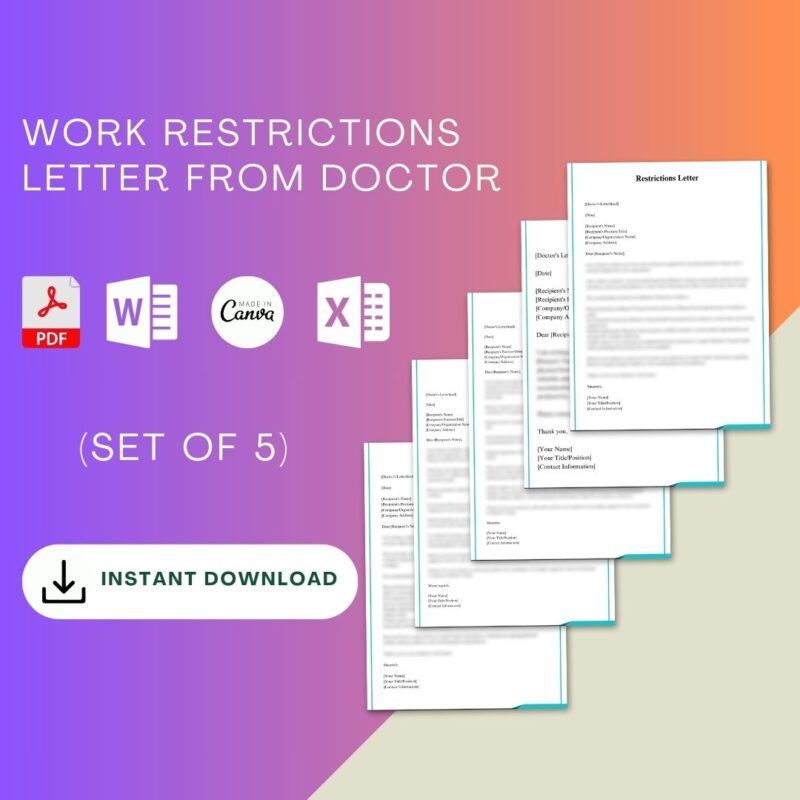
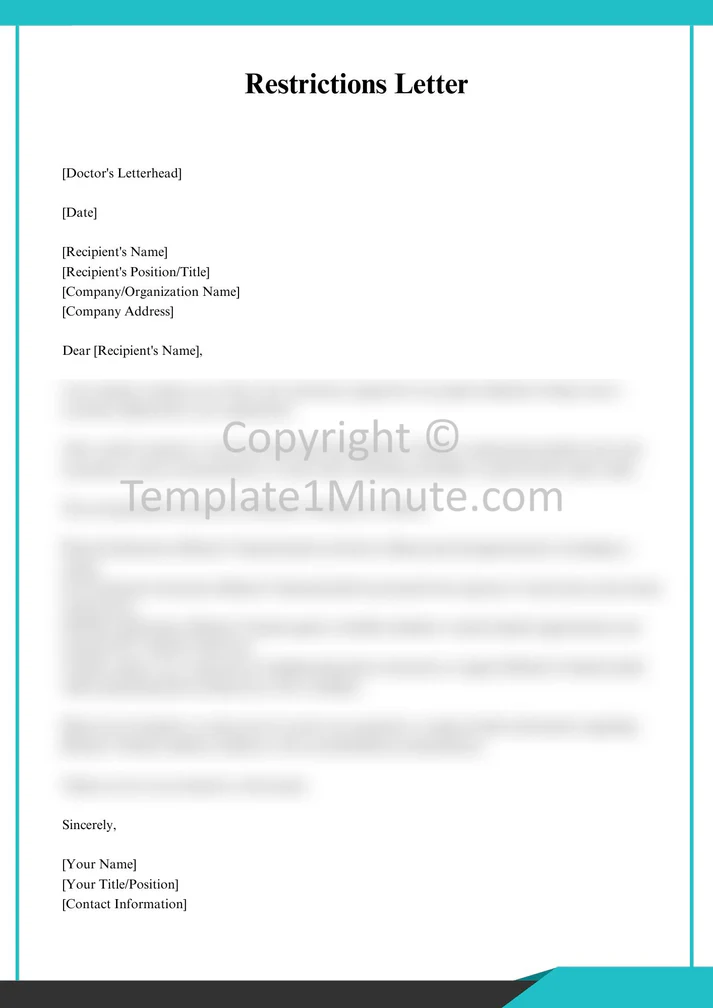

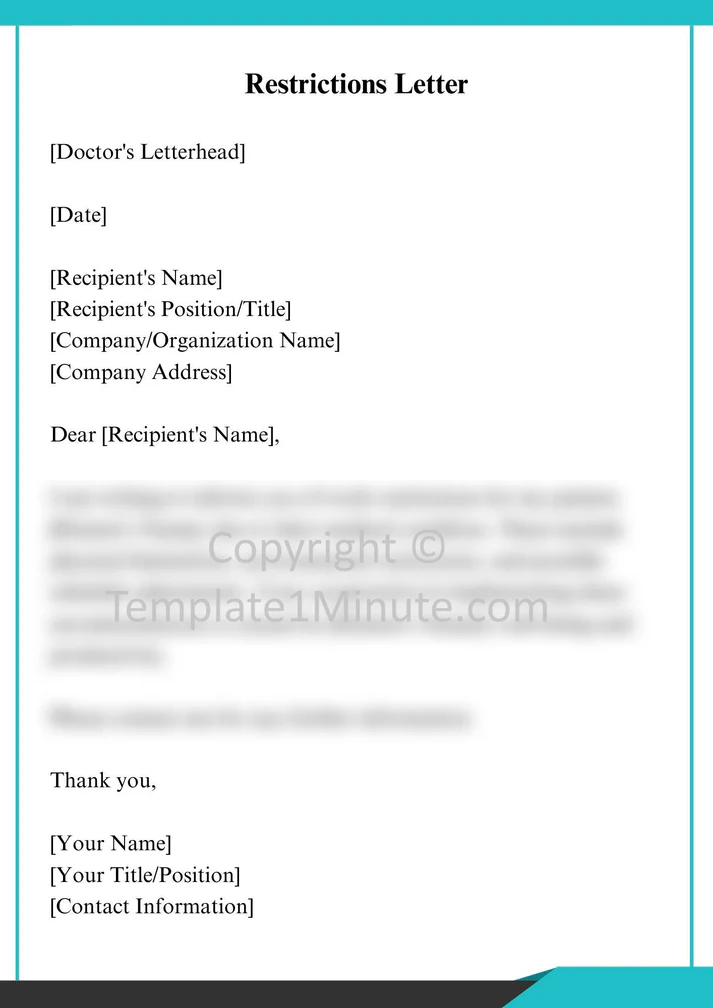

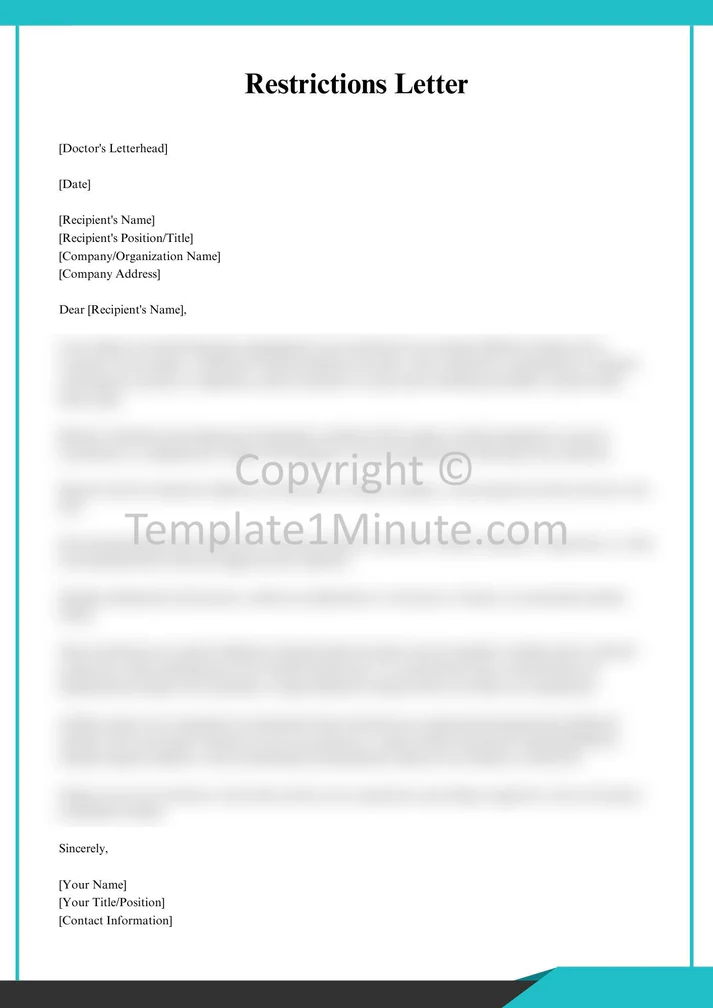

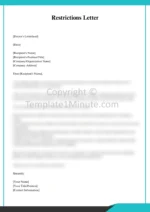


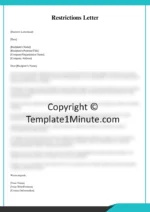
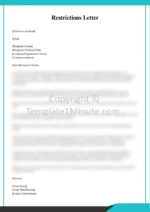

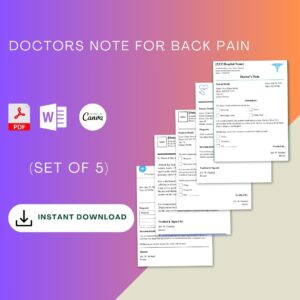

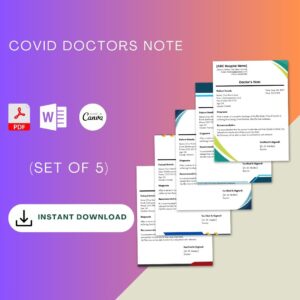
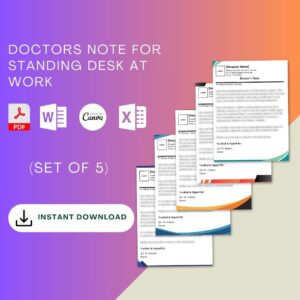
Reviews
There are no reviews yet.